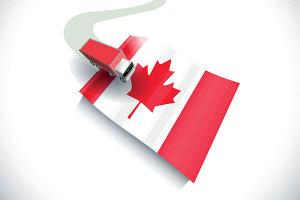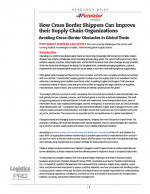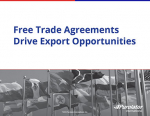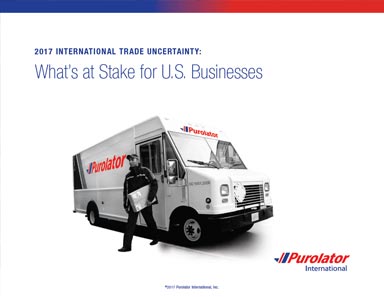2017 International Trade Uncertainty: What’s at Stake for U.S. Businesses
A mid-February 2017 report by Business Insider detailed the proposed border adjustment tax, currently under consideration in the U.S. Congress, which would impose a 20 percent tax on all goods entering the United States.
The Business Insider report detailed the views of multiple industry analysts and expressed a consensus view that the likelihood of the border tax passing, in its current form, was 30 percent or lower.
But at about the same time, Washington, D.C.-based securities firm Height Associates expressed its opinion via Twitter: “We believe #bordertax adjustment has a 75 percent chance of passing the House, but only a 30 percent chance of passing the Senate.”
If enacted, the border tax would have significant implications for U.S. businesses, including retailers that rely heavily on imported goods.
The tax is predicated on the assumption that higher import taxes will encourage businesses to shop - and manufacture - within the U.S. for components and products currently purchased overseas.
But the widely differing estimates about the tax's likelihood of success are emblematic of the uncertainty that seems to have settled over much of U.S. economic and trade policy. Things that once seemed settled appear to be unraveling.
The Trump administration has vowed to review every existing free trade agreement, including the North American Free Trade Agreement (NAFTA), to ensure maximum benefit for United States workers and businesses. The administration has also suggested it may be willing to impose significant tariffs on certain types of products, such as auto components, as well as on products arriving from countries including China and Mexico.
As the U.S. evaluates its trade priorities, many of our key trading partners are taking steps to strengthen their own positions. Our historically largest partner, Canada, has finalized a free trade agreement with the European Union. Another trade agreement under consideration and being led by China would involve 46 percent of the global population.
That agreement, the Regional Comprehensive Economic Partnership (RCEP), is under consideration by the 10 countries that comprise the Association of Southeast Asian Nations (ASEAN) plus China, Japan, Korea, India, Australia, and New Zealand. Neither of these agreements involves the United States.
Research by the Business Continuity Institute, as reported by Bloomberg, asked business executives representing 79 countries to list their biggest worries. “For the first time in the study’s six-year history, uncertainty related to ‘new laws and regulations’ - arising from political change entered the list of top 10 business concerns,” the article noted.
What’s Related




Favorites





